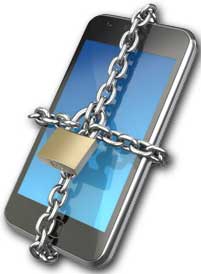10 Best Practices to secure BYODs
SmartPhones and iPhones are great for employee productivity but they introduce security risks to your organization
 10 Best Practices to secure BYODs - More employees and enterprise associates are bringing their own iPhones to the office. How sure are you that they are secure. While iPhones are great for employee productivity, they can introduce security risks to your organization.
10 Best Practices to secure BYODs - More employees and enterprise associates are bringing their own iPhones to the office. How sure are you that they are secure. While iPhones are great for employee productivity, they can introduce security risks to your organization.
Order BYOD Policy BYOD Policy Download Selected Pages
Best practices to secure SmartPhone and iPhones are:
- Implement a formal written BYOD policy that clearly states which devices and applications are supported
- Set up a locking password on each device. Integrate password usage with wipe the phone after x number of invalid tries. At the same time have a way to restore the phone if the phone is wiped.
- Implement a phone locater on all SmartPhones. In the case of the iPhone use the "Find My Phone" application.
- Protect the access point of your network so that only devices that meet your stringent security requirements are allowed access to you network and data.
- Implement anti-virus where possible. In the case of iPhone there is not anti-virus. That means that you email service provider needs to do the scan BEFORE emails are sent to the device.
- Manage authorized applications so the contact and other sensitive data is not extracted from the device by the applications.
- Utilized data encryption on e-mails and enterprise data
- Utilize the cloud as a back up source
- Be wary of applications like QR coder readers. They can direct the user to sites that can take control of the device.
- Monitor access and data usage by device and by user. Have processes in place that actively inform management of any potential ares were the network and data can be compromised.
Order BYOD Policy BYOD Policy Download Selected Pages
IT Infrastructure Policy Bundle
Read On Infrastructure Policies
